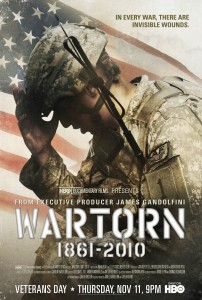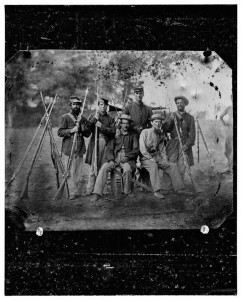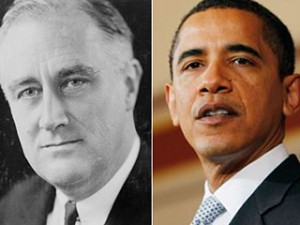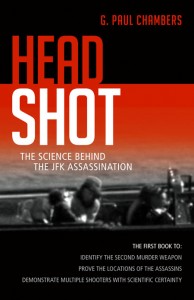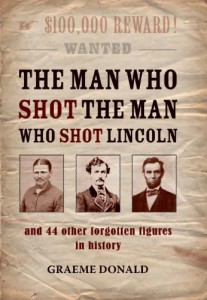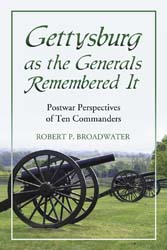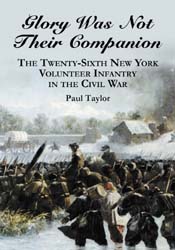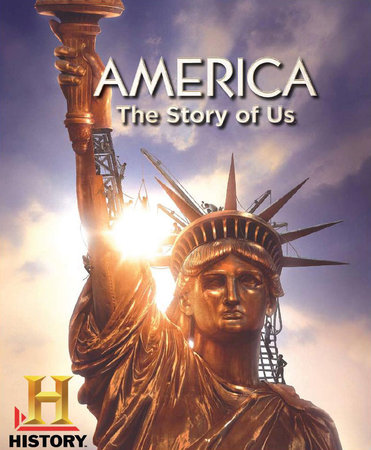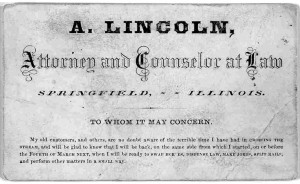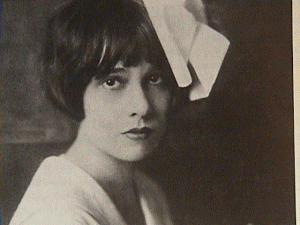
[This was a paper I wrote last year during my master's studies. Footnotes omitted.]
It was the largest movie set ever created. The year was 1915 and the production was for the movie Intolerance by celebrated director D.W. Griffith. It was the much anticipated follow-up to his classic The Birth of a Nation. Even by today’s standards the set was extravagant. Griffith’s company had constructed a Babylonian city that sprawled more than 250 acres at the intersection of Hollywood and Sunset Boulevards in what is today “Hollywood.” It was a mile wide with towers and walls that stretched 300 feet into the California sky. It was the most expensive movie of its era and if duplicated today the cost would be in the hundreds of millions of dollars. It was breathtaking.
The evolution of the motion picture in American history is one of social progress and cultural revolution. Hollywood’s impact on American culture has been thoroughly studied. The notorious lives of famous directors and actors have been well documented. However, few have looked at the experiences of women screenwriters and their contribution to the evolution of the film industry. Additionally, their voices (often silent) helped to address class and gender roles in American society during the Progressive Era. This paper will follow three narratives: First, the life of Anita Loos and her quest to make her craft into an art form and how she addressed social issues of the era. Second, it will identify how women screenwriters by 1920 became a dominant force in Hollywood pictures and were able to use film to address social issues. Third, it will place the evolution of screenwriting into basic historical context.
In 1903 the Vitagraph company of New York was attempting, with little success, to adapt the popular stage play Raffles, the Amateur Cracksman. The original movie was shown without any subtitles and left the audience confused to the action. At this time, most “flickers” simply projected moving objects, city streets, magic shows, and other strange performances. There was no sound and no subtitles.
The Europeans were the first to adopt dramatic narratives. In 1903, the Daring Daylight Burglary (co-produced by Thomas A. Edison studios) was released and with it a written synopsis accompanied the film so that exhibitors could pass out copies to the audience before the movie played. With the adaptation of drama, audiences started to want more from movies (instead of contortionists and magicians). By 1901 fire rescues and chase movies were popular and offered the audience a somewhat dramatic narrative, though crude. Fire! (1901), one of the better examples, was directed by European producer James Williamson of the Kinematograph company. Williamson also directed Stop Thief!, one of the first competent chase movies.
The Americans were not far behind. Edwin S. Porter’s Life of An American Fireman surpassed any dramatic film at the time. By 1903 motion picture audiences expected suspense, drama, and some kind of storyline. It’s therefore no surprise that the movies had to find new techniques that allowed the pantomime in front of the camera to become more narratively appealing and satisfying. They would accomplish this with editing and subtitles—both initiated by Porter.
Typically scenes would follow one after another using what we would call a “dissolve” effect, which would allow for transition from cutting point to action. In 1903, Porter’s film version of Uncle Tom’s Cabin departed from this practice “by inserting announcements with brief descriptions as they appeared in succession.” Many historians consider this to be the first use of subtitles in American motion pictures.
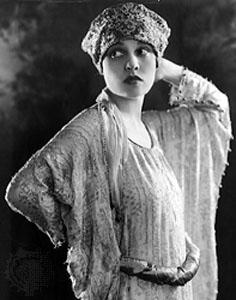 The first screenwriters (“scenario writers” they were called) were newspaper men who could write short but enticing headlines (known as “slug lines”). But as film evolved, the ability of subtitles to convey more was required. Screenwriters needed to develop more “sensitivity” to modern day issues. Silent film evolved during the height of the Progressive Era and the “Muckrakers.” One of the first screenwriters to write such screenplays and subtitles was Anita Loos. She has been called by film historians as the “first literate screenwriter” as she was a pioneer in dialogue titles which became prominent by 1915 as audiences became more sophisticated and demanded more from the flickers.
The first screenwriters (“scenario writers” they were called) were newspaper men who could write short but enticing headlines (known as “slug lines”). But as film evolved, the ability of subtitles to convey more was required. Screenwriters needed to develop more “sensitivity” to modern day issues. Silent film evolved during the height of the Progressive Era and the “Muckrakers.” One of the first screenwriters to write such screenplays and subtitles was Anita Loos. She has been called by film historians as the “first literate screenwriter” as she was a pioneer in dialogue titles which became prominent by 1915 as audiences became more sophisticated and demanded more from the flickers.
*****
When Anita Loos arrived in Los Angeles she was told to take Sunset Boulevard and keep a look out for an enormous “Babylonian temple.” She was looking for D.W. Griffith, her new boss. Anita was three years into her meteoric rise as one of the most popular screenwriters of the silent movie era. Her rise in motion pictures (1912-1918) paralleled not only the important developments within the industry, but also the emergence of the subtitle as a true art.
“In this field there is but one person who has won distinction: Anita Loos,” wrote movie critic and theorist Vachel Lindsay in 1915. “She is one of the four or five important and thoroughly artistic brains in the photoplay game.”
In 1897 a stage company owner and family friend came calling one afternoon in need of two child actors. Anita’s father R. Beers Loos agreed to allow Anita and her younger sister Gladys to join the production. As a child actress Anita played on the stage in Los Angeles, San Francisco, and San Diego—she even played the part of a young boy with Nance O’Neil in The Jewess for over three years. Anita might have became a movie star if it weren’t for her passion as a writer as she had the looks and personality to be on screen.
But from an early age Anita was a writer at heart. At age six she won her first writing contest and shortly after wrote her first play. She was soon sending articles out to various publications including the New York Telegraph, and apparently “nearly everything Anita sent was accepted.” Therefore, with the helpful encouragement of her father, Anita turned from acting to writing. Her father was a newspaperman known for wit and humor and that was evidently passed on to his daughter.
In her memoirs, A Girl I Like, Anita claimed that in 1912 the first scenario she sold was also produced. The scenario she referenced, The New York Hat, was an early silent film directed by D. W. Griffth and starring Mary Pickford and Lionel Barrymore. Generally regarded as an early silent era classic, “the film has remained in circulation and has become a staple of film courses and film societies.”
The New York Hat is a commendable social commentary about a dying widow who on her deathbed gives her minister a letter containing some money asking him to buy her soon to be orphaned daughter something “beautiful.” Perplexed about the chore he escorts the daughter on a walk. She stops and admires an expensive hat. He waits until she is gone, purchases the hat, and sends it to her anonymously. The daughter is surprised by the mysterious gift. She wears it out to church and instantly a scandal arises as the store clerk remembers the sale and a rumor of infidelity surfaces. The minister is accused of wrongdoing. However, much to the embarrassment of the town gossip, the minister explains what happened and produces the mother’s letter.
As subtitles developed and became more prominent, the debate over their need and effectiveness carried on as well. Writing in 1917, Karl Schmidt stressed the issue, saying, “There are those who contend that the ideal screenplay will be acted from beginning to end without a single subtitle of comment or explanation.” Continuing the argument, “The Subtitle has only been in vogue a few years. It differs from the title – the wording between scenes which describes the action of the picture that is to come – in that it need not attend to business.” The initial usage was to explain the action and not convey theme or mood. As the audience became more savvy there would be a need for a more literate style
Developments in the craft of subtitle writing were numerous during 1914 to 1918. Subtitles became more efficient. The emphasis on quick and literate subtitles developed as they were “freed from [their] grammatical regulations.” Descriptions were boiled down to what was absolutely necessary. But what was not lost on these early screenwriters was the sense of accomplishing a true art. “In time the art of title writing was developed to a high order of directness for motion pictures, still in evidence in the ‘trailers’ or ‘coming attractions’ advertisements of the present day.”
In 1920 Anita Loos and her director husband John Emerson published, How to Write Photoplays. In it they wrote: “Many sub-titles have to be written during the cutting. Frequently the wording must be changed with a view to how it will appear on the screen, not how it sounds when read aloud.” As audiences became more sophisticated the need for more complex and engaging stories transpired as well.
However, some argued that subtitles were not always required, such was the case with vampire movies of the time. Familiar topics were in wide circulation and everyone knew the storyline ahead of time. Additionally, horror films were seen as best viewed without the irksome text constantly flashing on screen as everyone knew what was happening. Such early vampire movies included: The Vampire of the Desert (1913, from the “The Vampire” poem by Rudyard Kipling), Vampires of the Night, and The Vampire’s Trail. These plots were easily understood. Even the sexual seductive vampire that Theda Bara played in A Fool There Was (1915) was a story that “the plot was already well-known to contemporary audiences.” The movie was written by Roy McCardell and directed by Frank Powell.
*****
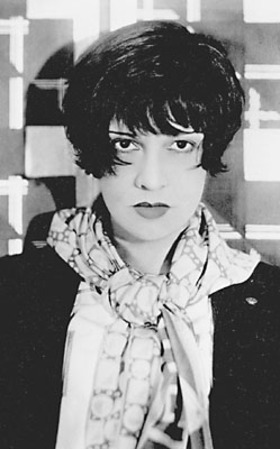 The first great class of screenwriters were women who addressed important social issues that other women would want to see on screen. But they didn’t just write.
The first great class of screenwriters were women who addressed important social issues that other women would want to see on screen. But they didn’t just write.
One of the first film chroniclers (historians) wrote in 1915:
In no line of endeavor has a woman made so emphatic an impress than in the amazing film industry, which has created in its infant stage a new and compelling art wherein the gentler sex is now so active a factor that one may not name a single vocation in either the artistic or business side of its progress in which women are not conspicuously engaged.
Thus it was not just women writers who were succeeding, but even women directors and editors. Lillian Gish and Mary Pickford were two of the first female “movie stars” and as they gained prominence they began to challenge the status quo and demand movies that were more to their liking. This lead to the proliferation of women in film so much so that by 1920 there were over 20 women directors making movies. During this time there were hundreds of prominent women in film. Women of the era were considered to be the top screenwriters and over 40 were employed by various studios. A few women were even able to become executives when in 1919 Mary Pickford helped to form United Artist with Charlie Chapman, Douglas Fairbanks, Jr., and D.W. Griffith.
The most important women non-actor of the era was probably Lois Weber who in 1908 was an activist and street evangelist preaching about the social ills of the day. This led her to filmmaking and the establishment of her own studio by 1917. Weber was a Progressive and her films dealt with important Progressive issues such as temperance, domestic violence, poverty and suffrage. She is considered to have invented what became known as the “problem picture” that dealt with social injustice.
At the height of the Progressive Era women writers began to address social and political issues. Writers such as Ida May Park, Jeanie Macpherson, Bess Meredyth, Elinor Glyn, Lenore Coffee, Jane Murfin and Anita Loos. Such socially conscious films included: What Shall We Do With Our Old (1915), Hypocrites (1914), Where Are My Children? (1916), How Men Propose (1913) and Votes for Women (1913). Another early film, The Blot by Lois Weber was a popular “problem picture” and focused on poverty and the plight of a starving family. The Deadly Glass of Beer, a simple scenario about the ills of alcohol was one of Anita Loos’ first screenplays. One of her classic screenplays was a political thriller American Aristocracy (1917) that delt with the shipment of arms to Mexico and even today would be a politically astute film about American imperialism.
Feminism was a growing movement in pre and post World War I eras in Hollywood screenwriting and filmmaking. Women were working in all aspects of film from props to film editor. As the fledgling film industry attempted to take hold around the turn of the century, Nickelodeon Theaters were some of the first to hire women as managers, cashiers, and pianists. The reason was pragmatic, but important in the movement towards more independence for women. The first “flickers” were family oriented and gaining women’s acceptance was key for business. Additionally, during the 1920s, the theater would be one of the first places women would be seen smoking in public while enjoying a movie and became a symbol of liberation.
A New York Times editorial in February in 1920 caused Anita Loos and her director husband John Emerson to write to the publication in defense of a film they produced that depicted marriage in a not so traditional manner where a “jealous husband who pounds the table and throws a paper weight at his wife…” Such expression of violence by women perpetrated by men was not socially acceptable. The reaction was symptomatic of a changing mood in the country.
As the Progressive Era drew to an end and Conservative values began to dominate the motion picture industry things such as the rating system emerged. But yet again women screenwriters such as Dorothy Arzner and Nell Shipman were still prominent in penning stories that reestablished Conservative values. Perhaps most representative of the new era of screenwriting was Shipman’s Back to God’s Country (1919). As the “roaring twenties” gained momentum and the Flappers emerged, Hollywood films were encouraged to focus on traditional values. Women were depicted in traditional role such as housewives who spurned the idea of employment and independence.
*****
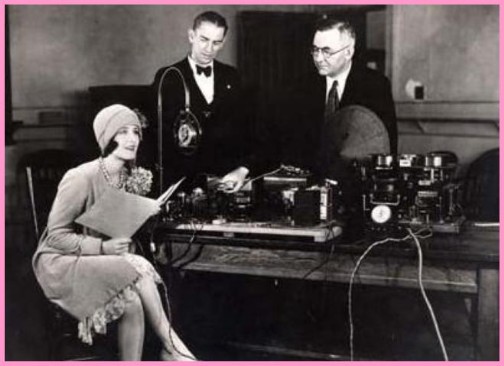 “Over a hundred of my half-hour slapstick comedies have [been] filmed,” wrote Anita Loos in Kiss Hollywood Good-by in the late 1970s. Anita continued to write her scenarios and work for D. W. Griffith, who left Biograph for Mutual and then Fine Arts-Triangle. By the end of 1913, she went from making $25 per scenario to $50, which was good money at the time. In 1914, she made $500 for her first feature length script, Pennington’s Charm, a very large some and another symbol of the power of women in film. By now she was starting to get noticed and that eventually led to her association with D.W. Griffith.
“Over a hundred of my half-hour slapstick comedies have [been] filmed,” wrote Anita Loos in Kiss Hollywood Good-by in the late 1970s. Anita continued to write her scenarios and work for D. W. Griffith, who left Biograph for Mutual and then Fine Arts-Triangle. By the end of 1913, she went from making $25 per scenario to $50, which was good money at the time. In 1914, she made $500 for her first feature length script, Pennington’s Charm, a very large some and another symbol of the power of women in film. By now she was starting to get noticed and that eventually led to her association with D.W. Griffith.
In 1897, under the stage name of Lawrence Griffith, David Wark Griffith (1875 – 1948) joined a Louisville stock company. For two seasons he played various supporting roles on stage, but it wasn’t his acting that brought him into contact with the movies, it was his writing. Though Griffith loathed the idea of doing movie work, he had little other prospects after his acting career stagnated and his fiction writing failed him. In 1907, at the age of 32, penniless and out of work, Griffith started knocking on studio doors in an attempt to sell his writing to the fledgling movie industry. It was a safe move as very few early 20th Century artists considered movies a worthy platform for their art. He eventually knocked on the door of the Edison Company in the Bronx, where Edwin S. Porter, already an accomplished and well respected directed, greeted him with open arms.
Thanks to Griffith the movies were finally starting to tell stories and did so in a natural and visual way. Griffith’s innovations freed the craft of moviemaking to become an art. And as a result, “the development of scenario writing began to evolve parallel to Griffith’s development of pictorial narration.” Interestingly enough, Anita once said of the director that he “was only marking time until he could go back to being a playwright and a poet.” Griffith was always a writer at heart, which is perhaps why he was able to accomplish what he did before anyone else. He wasn’t simply a technician like so many early filmmakers, but an artist. “The task I’m trying to achieve,” Griffith said, “is above all to make you see.”
Unfortunately, the movies wouldn’t let go of Griffith until he was broke, destroyed, and most painful of all for him, forgotten.
The most persistent impression of the years that followed [Griffith’s prime] … is of an old man, drunk and mumbling (and occasionally disclaiming) about his past glories as he staggered about the night streets of Hollywood, getting into arguments in the bars, occasionally making indecent propositions to the women he encountered.
As Griffith Biographer Richard Schickel would note, this image of a broken Griffith was in part, “based… on guilty rumor.” An ending fit, some have said, for the director who created the great racist film (The Birth of a Nation). Griffith was never to be forgiven, but only forgotten. Years later before his death in 1948 Griffith declared that modern movies “have lost [their] beauty.” Indeed, they had. At the time, during the height of the Film Noir movement, modern movies must have been unrecognizable to someone such as Griffith.
In 1916 Anita Loos’ most famous screenplay was produced, His Picture in the Paper. Anita’s writing was always socially aware of the current issues that would interest the average, middle-class, moviegoer and as always she wrote stories appealing to women. Anita herself was an average middle-class girl until the movies swept her away. Her big break came when Griffith was approached by one of his directors who had found a script, “There’s some fellow named Loos who’s turned out just what I want for a Fairbank’s picture. When can I meet him?,” remembered the director. Griffith immediately recognized Anita’s talent and was not afraid to hire a woman to work with him.
Anita Loos’s scenario for His Picture in the Papers was ground breaking. Griffith remembered of it that, “If you study it, you’ll notice most of the laughs are in the dialogue, which can’t be photographed.” But eventually they realized that by printing the “laugh lines… on the film” they could accomplish a richer film going experience. But it had to be tested out and as luck would have it, that would happen.
S. L. Rothapfel managed the Roxy Movie Palace in New York and his feature film for the weekend had not arrived. In a panic he called the film Exchange and they sent over a replacement film, which turned out to be His Picture in the Paper. The film was first shown at the Strand Theatre where its reception is not known. Rothapfel recalled the evening the film was shown and noted that it was a huge success. It began with a long subtitle, which was very unusual for the time. Rothapfel was shocked when the picture started to roll and on the screen appeared words. After a moment of panic, he realized the opening title “brought forth a hearty laugh.” The subtitle had arrived and did so with a bang.
His Picture in the Paper turned out to be the breath of fresh air to audiences everywhere that Griffith and director John Emerson had hope for. Douglass Fairbanks was the star of the film and it helped to launch his career. “Time and again,” said Fairbanks shortly years later, “I have sat through plays by Miss Loos and have heard the audience applaud her subtitles as heartily as the liveliest scenes. There have been cases I could mention where her comments out-shone the scenes themselves. This has convinced me of the great value of the kind of work she does.”
Perhaps Lois Weber conveyed the power of film best in 1913:
Often the right words in a leader or other insertion are the means of creating an atmosphere that will heighten the effect of a scene, just as a tearful conversation or soliloquy at a stage death-bed will move the audience to tears where the same scene enacted in silence would leave it dry-eyed. Naturally, the wrong words may have the opposite effect, but that is no argument against the leader; it only argues that the wrong person wrote it.
The success of His Picture in the Paper initiated a proliferation of subtitling in the movies. This influenced D.W. Griffith to hire Anita Loos to write a full set of subtitles for his latest film Intolerance. Perhaps their best effort was in 1916 when Anita and Emerson wrote and directed Norma Talmadge in The Social Secretary, an amusing and clever farce that is today still a favorite of silent film fans. Norma Talmadge played Mayme, a beautiful secretary who can’t seem to keep a job though not for lack of effort. Not long after the success of His Picture in the Paper, John Emerson asked Anita to be his wife. They married in the summer of 1919. From 1916 to 1919, the Emerson and Loos team produced some of the best silent films of the era. The screenwriting/directing duo of John and Anita is one of the first great creative teams in American Cinema history.
*****
The end of women dominance in motion pictures began with the rise of the Studio System in the 1920s and the mass marketing of the medium. Studio “Bosses” did not want women writers as they were not proven “fiction” writers and began recruiting novelists and playwrights. Some like Ben Hecht would earn six-figures and more. But perhaps the biggest change was the shift of the movie industry from East to West coast that took place before the 1920s. Films were shot on rooftops in New York for the best lighting, but could not be used year round. Once the weather and scenery of California became popular the shift was a natural one. The industry was dominated by Independent companies in New York and films were relatively inexpensive to make and thus allowed a lot of women like Lois Weber to start their own companies. Though some women like Anita Loos thrived for a time in Hollywood, the norm by the end of the1920s was the opposite. By the 1930s there were over one thousand writers in Hollywood and only a small proportion were women (less than 2 percent) and none were prominent. As one Hollywood supervisor noted, “By the 1930s, the only women on set were wardrobe women,” secretaries, and assistants.
What cannot be disputed is the impact women like Anita Loos had on the art and craft of screenwriting and the movie industry as it matured. The flickers progressed from a primitive form of voyeurism to an art and craft where social commentary and other important issues could be explored. Anita Loos and the “women of film” in the early 1900s deserve to be recognized for their important role in developing the art that we call “movies.” They helped to initiate social progress such as women suffrage and temperance. Their role in evolution of the movie industry, though not completely ignored, is often noted without the proper emphasis and respect. They were pioneers and artists who will always be remembered for their sensibility and craftsmanship.
Works Cited
Bachman, Gregg; Slater, Thomas J. American Silent Film: Discovering Marginalized Voices. Carbondale: SIU Press, 2002.
Carey, Gary .“Written on the Screen: Anita Loos,” Film Comment, Winter,
______, Anita Loos. New York: Knopf, 1988.
Emerson, John; Loos, Anita. How to Write Photoplays. Philadelphia: George W. Jacobs & Company, 1920.
Everson, William L. American Silent Film. New York: Da Capo Press, 1998.
Griffith, Mrs. D. W. When The Movies Were Young. New York: Benjamin Blom, 1968.
Hamilton, Ian. Writers in Hollywood: 1915-1951. New York: Carroll & Graf Publishers, Inc., 1990.
Jacobs, Lewis. The Rise of the American Film. New York: HB, 1939.
Leeds, Arthur. Writing the Photoplay. Springfield, Mass: The Home Correspondence School, 1913.
Lindsay, Vachel. The Art of the Moving Picture. New York: McMillian: 1915.
Mast, Gerald; Kawn, Bruce F. A Short History of the Movies. New York: Allyn and Bacon, 2000.
Pratt, George C. Spellbound in Darkness. New York: New York Graphic Society, 1966.
Ramsaye, Terry. A Million and One Nights. New York: Simon and Schuster, 1926.
Seger, Linda. When Women Call the Shots: The Developing Power and Influence of Women in Television and Film. New York: iUniverse, 2003.
Seldes, Gilbert. The Seven Lively Arts. New York: Harper & Brothers, 1924.
Schickel, Richard. D. W. Griffith. New York: Simon and Schuster, 1984.
Slide, Anthony, The Silent Feminists: America’s First Women Directors. Rowman & Littlefield, 1996.
Newspapers
Corsicana Daily Sun
Moving Picture World
New York Times
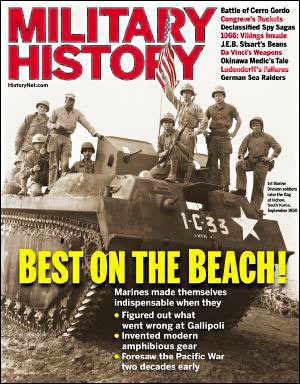 Ed Hooper wrote recently in the Atlanta Journal-Constitution that public schools and universities have lost the military aspects of American History. That our recognizing of our nation’s military heroes is waining. This process, according to Mr. Hooper, has led to a loss which has “trickled down to public school systems generations ago.” As Hooper notes, the rate of military genre book sales has been strong and has been for decades. The big names of American history continue to outsell the social/micro history subjects that don’t translate well to the general reading public.
Ed Hooper wrote recently in the Atlanta Journal-Constitution that public schools and universities have lost the military aspects of American History. That our recognizing of our nation’s military heroes is waining. This process, according to Mr. Hooper, has led to a loss which has “trickled down to public school systems generations ago.” As Hooper notes, the rate of military genre book sales has been strong and has been for decades. The big names of American history continue to outsell the social/micro history subjects that don’t translate well to the general reading public.

